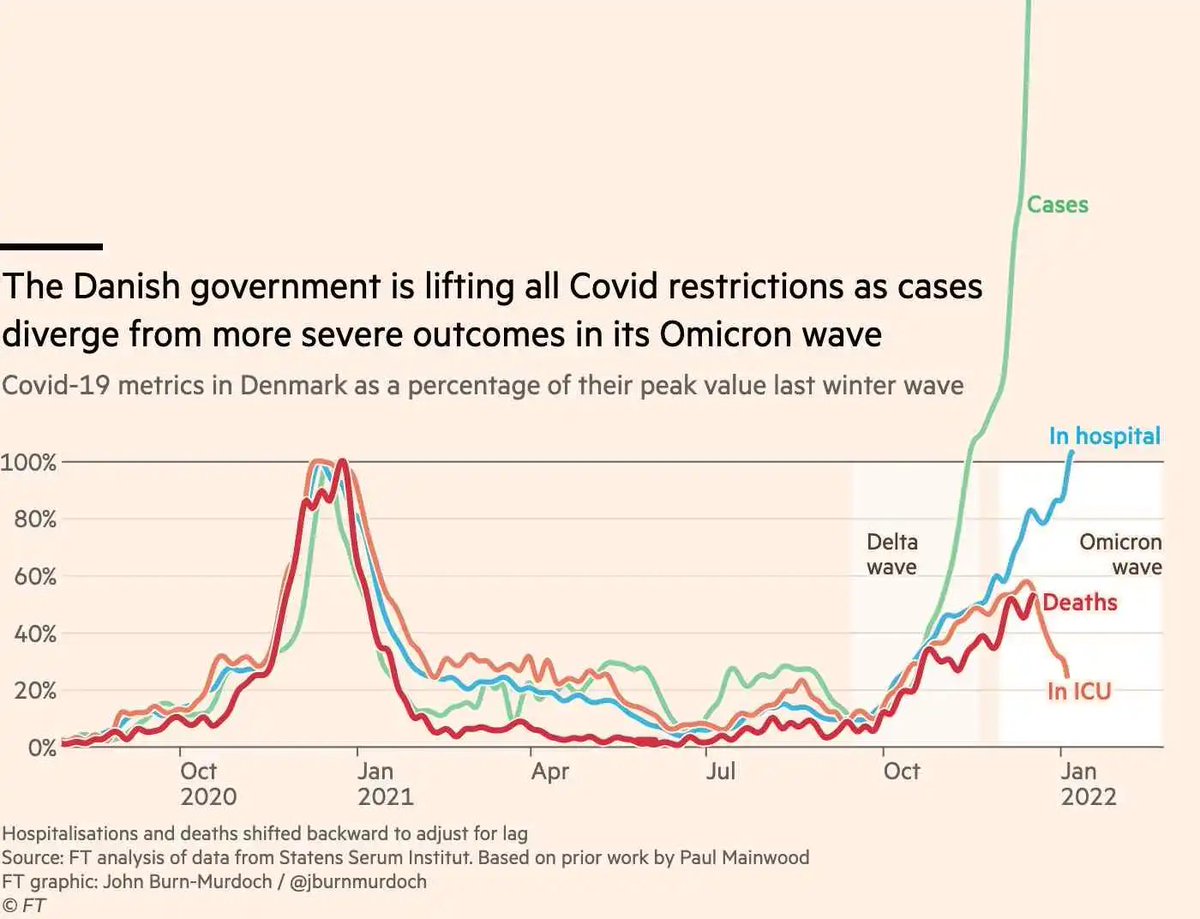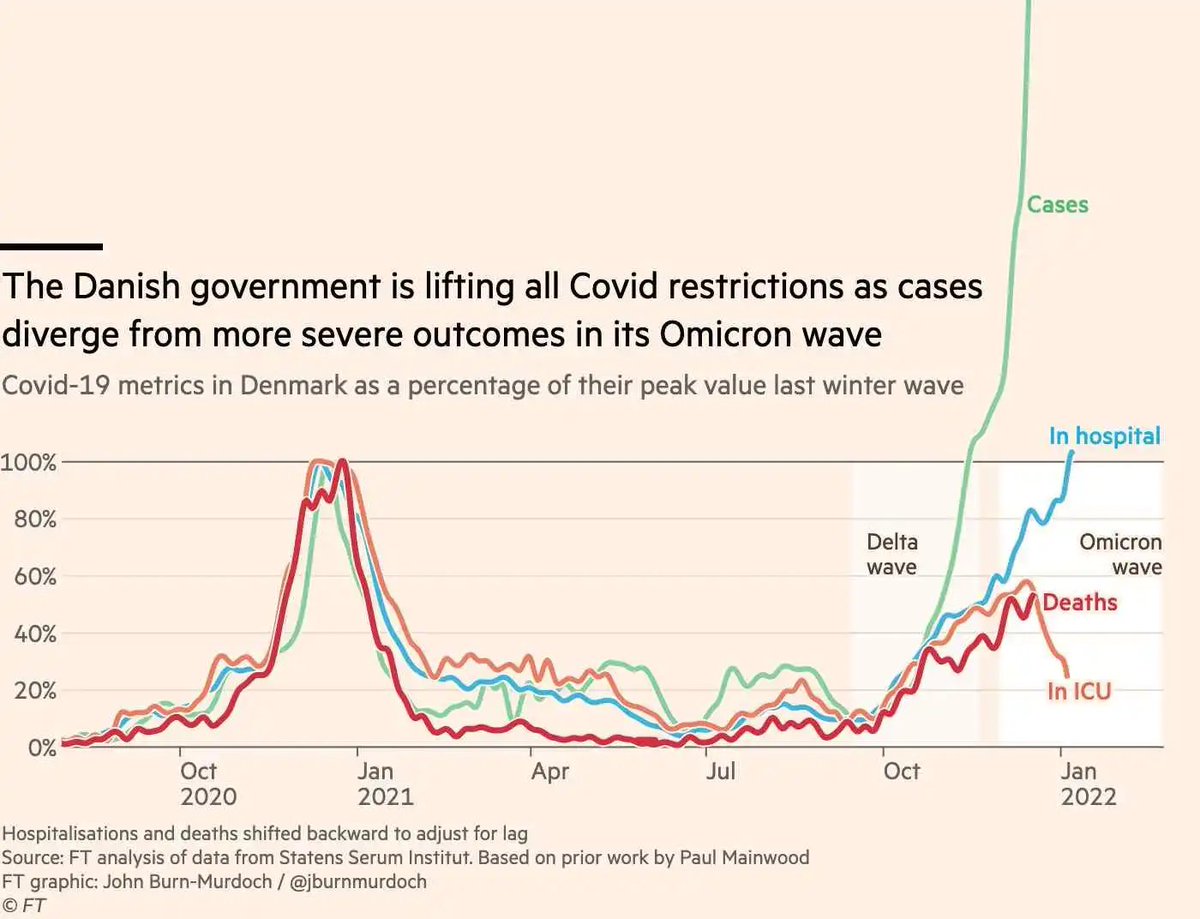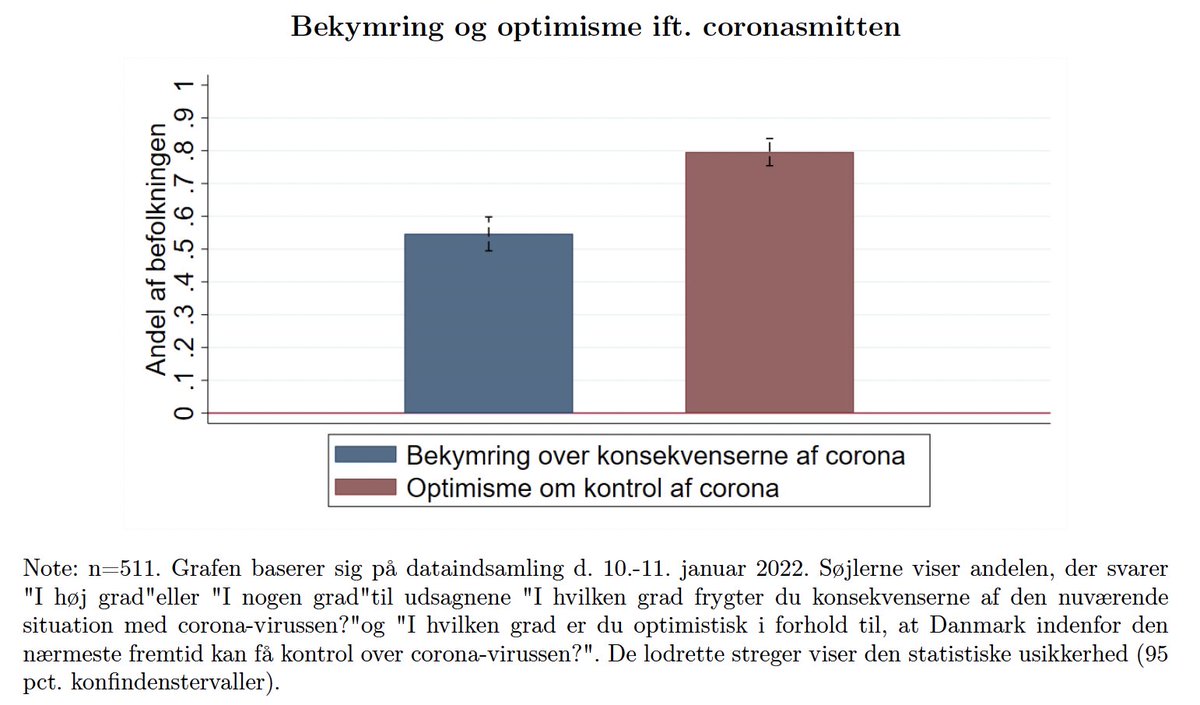
PSA to anyone interested in informing public discourse about the severity of the epidemic situation in Denmark (and maybe elsewhere):
Show extreme care when sharing screenshots of cases & admissions from @OurWorldInData or similar
Let me explain in 3 plots. (1/6)
Show extreme care when sharing screenshots of cases & admissions from @OurWorldInData or similar
Let me explain in 3 plots. (1/6)
Omicron generates very high case counts but lower severity, disrupting the indicators & patterns we have all been tracking for 2 years.
The plots I'll now show are all from Danish Center for Disease Control's (@SSI_dk) weekly monitoring report: ssi.dk/-/media/cdn/fi…. (2/6)
The plots I'll now show are all from Danish Center for Disease Control's (@SSI_dk) weekly monitoring report: ssi.dk/-/media/cdn/fi…. (2/6)
#1
With a lot of infections many will be admitted with but not because of covid. The plot below shows the development. Red is "because of". Right now only 55 % of admissions with a positive test are because of covid. (3/6)
With a lot of infections many will be admitted with but not because of covid. The plot below shows the development. Red is "because of". Right now only 55 % of admissions with a positive test are because of covid. (3/6)

#2
This also applies to people admitted to intensive care. This graph shows the development across weeks in how many are being treated for covid (in red) among those admitted to intensive care with a positive test. (4/6)
This also applies to people admitted to intensive care. This graph shows the development across weeks in how many are being treated for covid (in red) among those admitted to intensive care with a positive test. (4/6)

#3
Thise even applies to people dying while tested positive for covid. Purple are those estimated to die because of covid, with the proportion plotted in the lower plot. Right now 33 % who die with a positive test dies of something else. (5/6)
Thise even applies to people dying while tested positive for covid. Purple are those estimated to die because of covid, with the proportion plotted in the lower plot. Right now 33 % who die with a positive test dies of something else. (5/6)

Plenty to discuss regarding the Danish epidemic situation: E.g., this development in cases across age groups. What are the consequences regarding long covid? What will happen when cases increase among the elderly?
But any discussion starts with getting the facts right. (6/6)
But any discussion starts with getting the facts right. (6/6)

• • •
Missing some Tweet in this thread? You can try to
force a refresh













